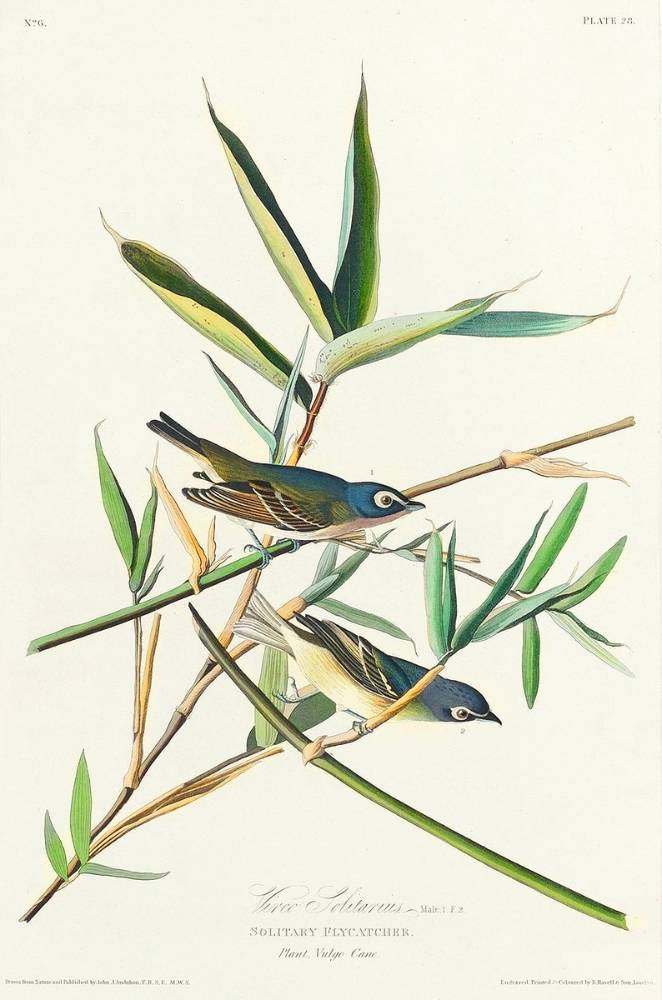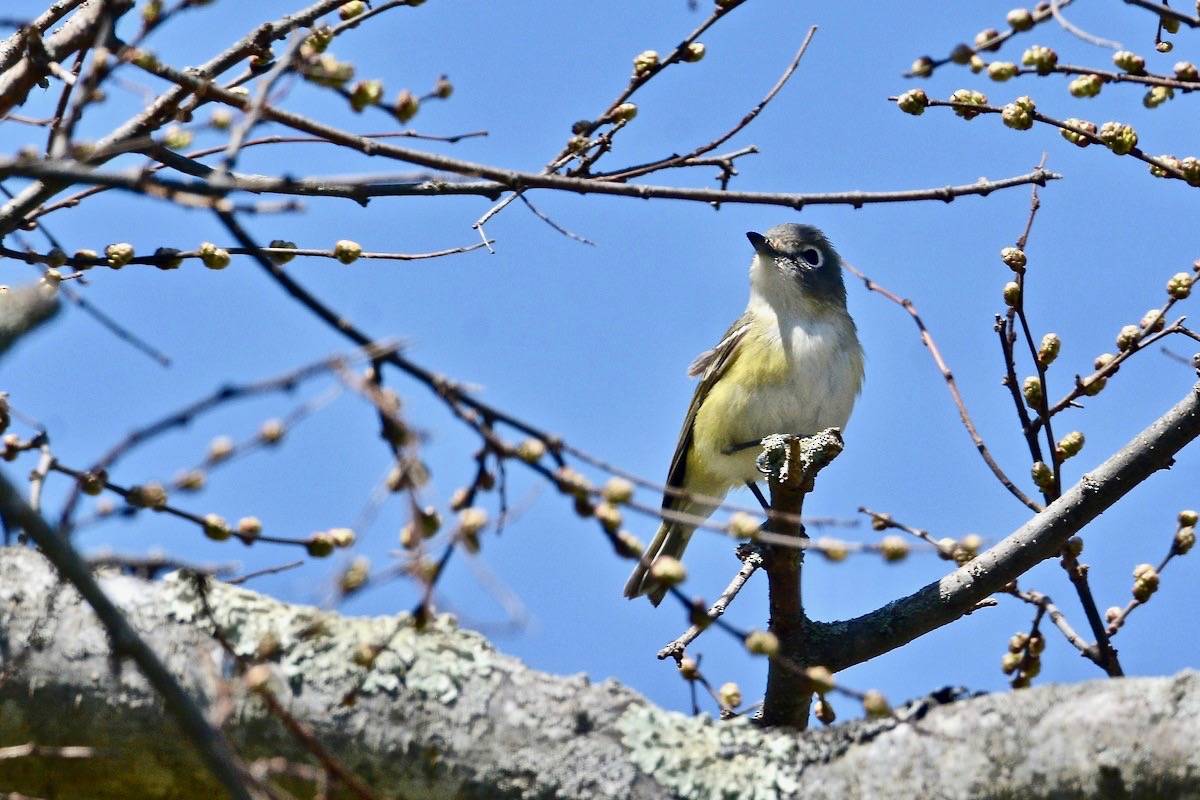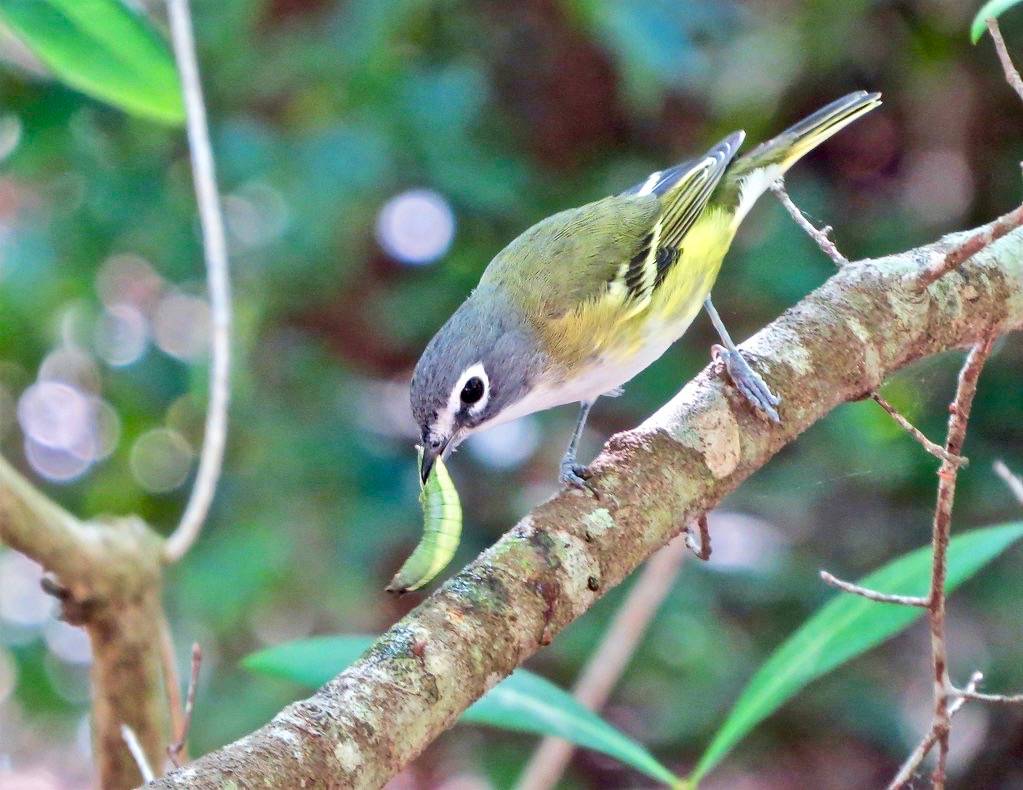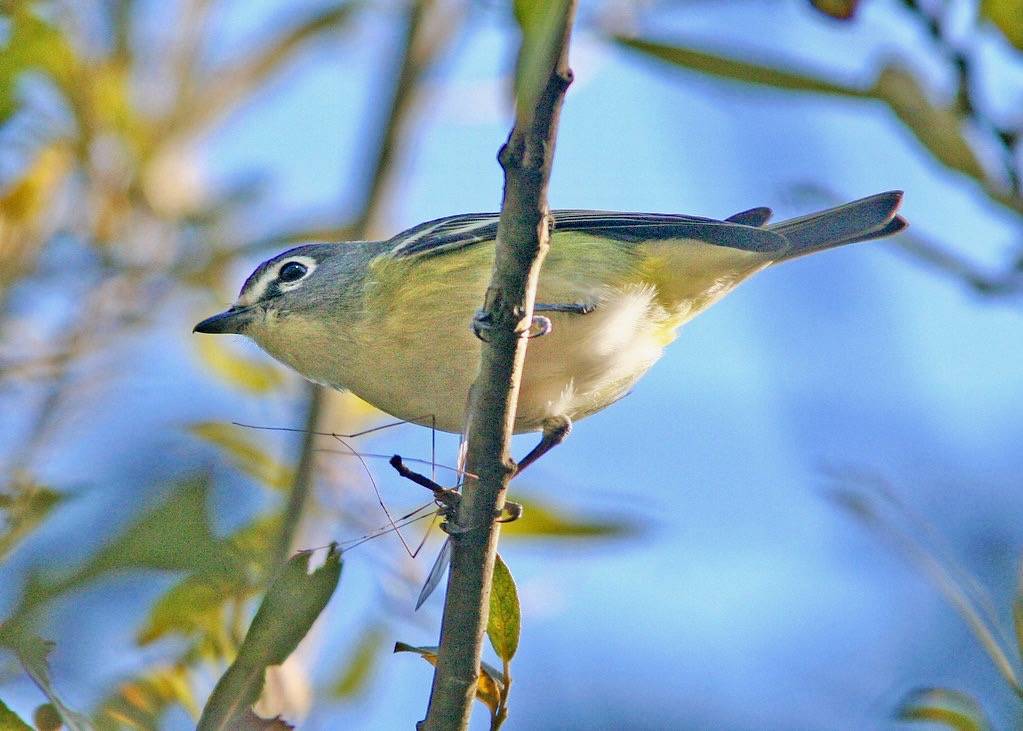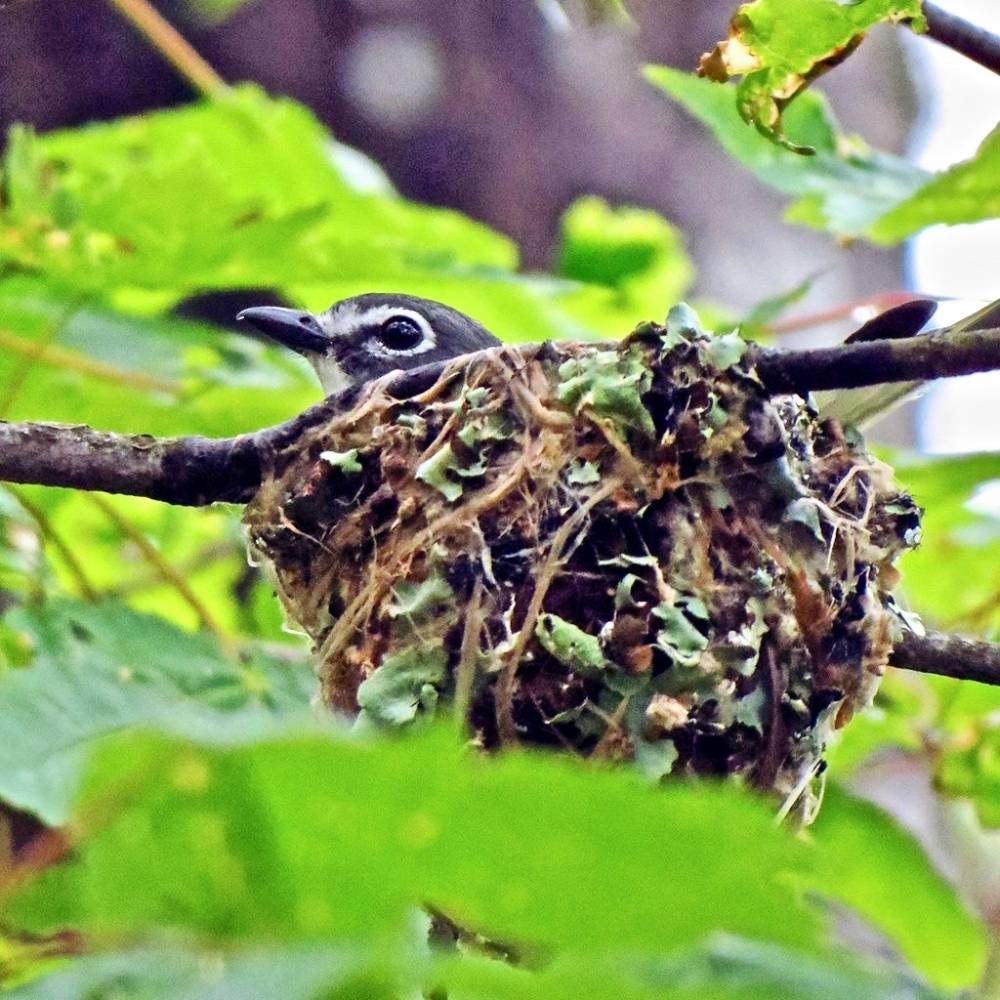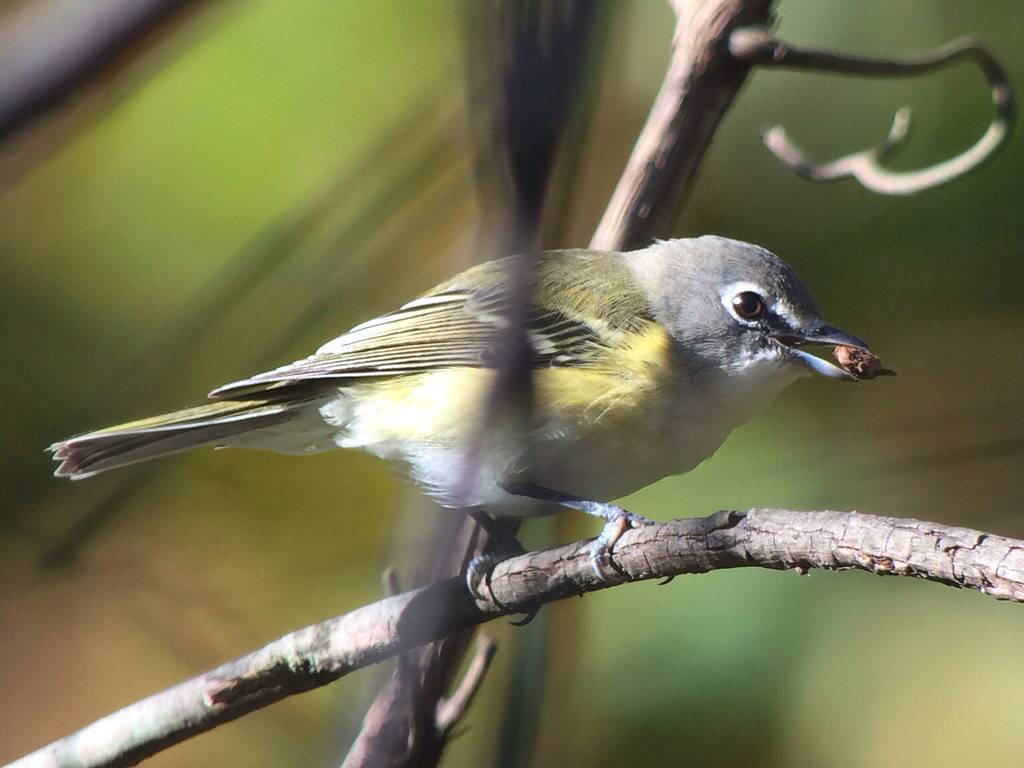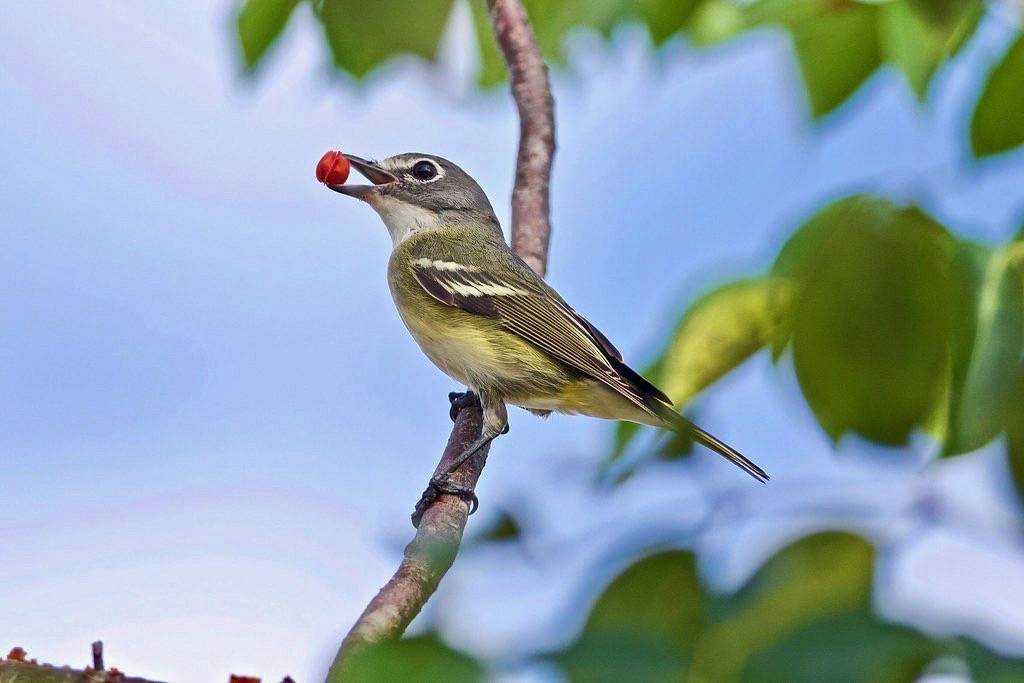Blue-headed Vireo
The Blue-headed Vireo visits Salter Grove in early spring when most trees are still bare of leaves. Despite its conspicuous wingbars and eyering, it is surprisingly difficult to spot because it moves very calmly and deliberately as it forages for insects on overhead branches of the upland woods.
It breeds in mixed temperate forest with a deciduous understory across the southern half of Canada and the eastern half of the United States south to northern Georgia. It winters in woodland and coastal shrubbery that extends from southern United States to eastern and southern Mexico, and south to northern Central America. Although the Blue-headed Vireo occupies such an expansive range, it is nowhere very common.
Studies indicate that only 10-30% of Blue-headed Vireo hatchlings survive. This low breeding success is attributed in large part to brood parasitism by the Brown-headed Cowbird whose more robust hatchlings outcompete the vireo hatchlings for food and parental attention.
For more information:
https://www.allaboutbirds.org/guide/Blue-headed_Vireo
https://www.audubon.org/field-guide/bird/blue-headed-vireo
https://en.wikipedia.org/wiki/Blue-headed_vireo
https://animaldiversity.org/accounts/Vireo_solitarius/
https://web.stanford.edu/group/stanfordbirds/text/uessays/uBrood_Parasitism.html


